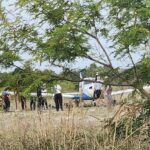INDIAN RIVER COUNTY — For anyone who lived in Indian River County in the late summer of 2004, September 5 rings some very queasy bells, and for good reason. It was the date that the northwest portion of Hurricane Frances moved ever-so slowly over our area, dumping 20 to 30 inches of rain, tossing around trees and peeling up roofs like paper.”I can’t believe it’s been five years already,” said barrier island resident Gaye McIntosh Ludwig. “It seems like it was yesterday.” If they evacuated, most residents like Ludwig and her family followed the recommendations of authorities such as then-County Emergency Operations Coordinator Nate McCollum and bugged out on September 3. Poised in shelters and hotel rooms and on friends’ couches, they started the long wait while the Category 4 Hurricane, much diminished prior to landfall, figured out which part of Florida to target. The diaspora extended west and north, as far away as the Panhandle and Georgia. The vagaries of the forecast caused some residents to hop on a plane to out-of-state relatives or to a vacation home out of the danger zone to hunker down until the storm passed.Then they waited, and waited and waited some staying up all night to mark the exact point in the wee hours when Frances would slam into Indian River County. The refugees were glued to CNN, the internet and all the regional news channels, hoping to catch even a tiny glimpse of what might be left of all the iconic places on Vero’s beach and Sebastian’s historic riverfront.The trek back home was only a foretaste of things to come. Traffic snarls and offshoot tornadoes made the traverse on State Road 60, U.S. Highway 192, I-95 or the Turnpike nearly surreal. The push was to get home, in most cases not having any idea what the driver was coming home to, if anything.Then, after returning home past what looked like a war zone with the National Guard running interference and directing traffic, the day-to-day reality of living in the aftermath of a major hurricane began to set in. Even if you didn’t have major structural damage, the vast quanity of debris — the mess — was simply overwhelming. So was the flooding.Normally, after a day of heavy-duty yard work, the reward is coming into the welcoming shade and relief of a cool house, maybe having an ice-cold beer and then taking a hot shower, putting on clean clothes and having a decent meal and a nap in the air-conditioning.None of that was really possible for weeks for many residents, but we still had the yardwork, the tearing up of carpets and hauling out of wet clothing and furniture that was quickly growing mildew and insidious mold that would terrorize us for months afterward and which probably still inhabits many Indian River County homes.”After ten days without electricity and air-conditioning, who would think sleeping on a cool ceramic tile floor could be so comfortable?” said Vero Beach resident Stuart Woodward.Those with ceramic tile or the old standby terrazzo were counting their blessings, as wood floors fared badly in the storm surge and flooding. So did any kind of alumninum structure or screen enclosure. The extensive power outages — six to eight weeks in some areas of the county — said McCollum, made our recovery that much more difficult.”Any disaster expert will tell you that the number one factor in how quickly an area starts to get back to normal after a major hurricane is power,” he said. “People can’t refrigerate, they can’t cook and these are just common everyday things that are not possible. They don’t have air conditioning so a lot of people can’t stay in their homes.”Not to mention not being able to operate power tools, shop-vacs and fans to get the debris removal and cleanup underway.Most gas stations were closed, but those who did have gas were rationing and the lines often ran the length of city blocks. Stores and restaurants lost all their perishable goods and deliveries of fresh foods often had to wait. After a few days, folks began to turn their attention away from the downed tree or from bailing out their flooded homes. The roads were passable enough to venture out and investigate the wider damage. The devastation found in areas like the Sebastian Riverfront, where the storm surge covered Riverview Park in about one foot of water and spread all the way to U.S. 1, was almost unbelievable. Indian River Drive was chewed up and spit back out from Frances and Capt. Hiram’s had a boat tossed up into the restaurant. How could this area recover? Where do we start? Who will pay for it? Does my insurance cover this? Those were some of the questions being asked.Sebastian’s Riverview Park was where VeroNews.com interviewed McCollum, who was not only the EOC when Frances hit, but also the Mayor of the City of Sebastian.The video below recounts McCollum’s remembrances about Frances and insights into how the storm has affected Indian River County in the long term. Famous for taking his tie off for select Tropical Updates so we would know when we really, really needed to take protective actions, McCollum was the constant presence who led Indian River County into, through and out of the epic misery that was Frances. As he leads us in the narrative, we fill in the gaps with the reader-submitted pictures that tell the compelling story of the devastation.
Hurricane Frances five years later, still recovering, remembering
previous post






